When I first read “Egg” to J, my 1.5-year-old, she batted at it like she wanted to crack it open. She’s a physical reader, somebody who wants to turn the page to see what’s coming even before the current page is done. It was no different this time. When I was halfway through reading, she slammed the book shut on my hand, then pointed to an Elmo book nearby. I left “Egg” to incubate overnight.
The next morning I brought it out again. This time, J was invested. She followed along as my finger went from panel to panel; she tried to repeat words after I said them; and she even released some words/sounds/guttural murmurs ahead of me. Sometimes all it takes is a little repetition.
“Egg” is the story of four eggs, one of which is a little late to the party.
After a few pages of anticipation, birds hatch out of three of the eggs quickly, but something’s up with the fourth. It stands sentry even as the birds fly away to start their lives, and the reader is left to wait, and wait, and wait to see what will come of the little green oval.
“Egg’s” author, the prolific Kevin Henkes, loves to repeat himself like this. His best work -- “Egg,” “Kitten’s First Full Moon,” “Owen” -- uses patterns as a vehicle for character development. In his most lauded book, “Kitten’s First Full Moon,” Henkes returns to the same refrain several times, the same way a song returns to its chorus as a way to stick in its audience’s brain. But Henkes doesn’t end things with a fade out; he tweaks the way the pattern plays out.
“Kitten’s First Full Moon” is about a cat who thinks the moon is a bowl of milk, and she will not rest until she laps it up. She struggles to reach it over and over, and with each failure the book reminds us, “Still, there was the little bowl of milk, just waiting.” After one particularly daring attempt she splashes into a pond and can’t take it anymore. She gives up. The refrain returns, but with a subtle subversion of our expectation. “So she went back home -- and there was a great big bowl of milk on the porch, just waiting for her.”
The pattern changed, and now Kitten is changed.
“Egg” is a far simpler story, and so its patterns are simpler too. They don’t play out over the course of the book, but instead the course of two adjacent pages. That lets even tiny brains like J’s pick up on what’s going on.
Soon after hatching and flying off, the birds in “Egg” get curious about what they left behind. They fly back and decide to take matters into their own hands.
J didn’t let me finish reading the first page before she tried to read the second: “Crrraaaa!”
I was stunned. We had only read it once before and she was barely listening. She can anticipate some of the pages of her favorite books, but there was no way she knew what happened in this one. But then I remembered J had seen a version of this same page moments before -- the one with three cracked eggs on it. When I read that page I had said, “crack, crack crack,” pointing to the egg with the jagged lines each time. Here was another, and J knew just what to do.
A few months ago, I wrote about J: “We’re in that magic time when any moment is a new glimpse of what she can do and what she can make you feel.” We’re still in that time, but now it’s not just what she can do, it’s what she can think. I’ve watched her prioritize different tasks when she has her hands full. I’ve laughed as she protests that we forgot to do our usual “love ya!” peekaboo game before bed. And I’ve seen her strategize which toys to accept as a trade for the toys she’s already holding.
If seeing what J could do with her body was magic, discovering what she can do with her mind is practically cosmic. A fully-formed brain is an unknowable thing, and a still-developing one even more so. When J recognizes a pattern, it’s an announcement of her endless brilliance, of course. But more significantly it’s an announcement of her endless self. At this age, mental leaps are a sign of agency as much as intelligence. When J croaks, “Crrraaaa!” it reminds me she came from nothing to be here.
Which brings us back to the egg. The egg has cracked, and the birds are excited to meet their new friend. Except…
Well, that wasn’t what they were expecting. The birds fly off, far away from the alligator’s jaws. He’s bereft to have to enter the world without any company. We watch as he mopes around, “alone, sad, lonely, miserable.” With each word the alligator slips deeper into despair, ending with his hands over his face.
But then the birds return. And this time they hitch a ride on the alligator’s back to watch the sunset. “Friends,” everyone coos, and the alligator is in bliss as they watch the sunrise together.
We can’t always predict what’s going to be in our eggs before they hatch, but best to make peace with whatever comes out. Think of all the sunrises in store. Day after day after day of sunrises. Just waiting for you.
Call it a pattern. Call it life.
Speaking of patterns changing, no newsletter last week! I sat down to write about “Egg,” and couldn’t crack it. Sometimes you just have to sit on things for an extra week before they’re ready. Thanks for your patience.
I’ve long had a dream to profile every Caldecott winner, which is what first made me want to write about “Kitten’s First Full Moon” and Henkes. In the process, I took far too many Henkes books out of the library, which is how I found “Egg.” If you’d like to skip the library and own these books for yourself, you can buy “Egg” here and “Kitten’s First Full Moon” here. Be warned, I make a 10 percent commission on every purchase.
But forget money. The best way to help this newsletter is to tell more people about it! The best pattern to follow is to forward this newsletter to potential marks every time you get it.
If you were one of those marks, welcome! Glad to have you. You can subscribe with the button below.
Want to tell me about a book, show, game, song, or something else I should be writing about? Message, email, or comment!



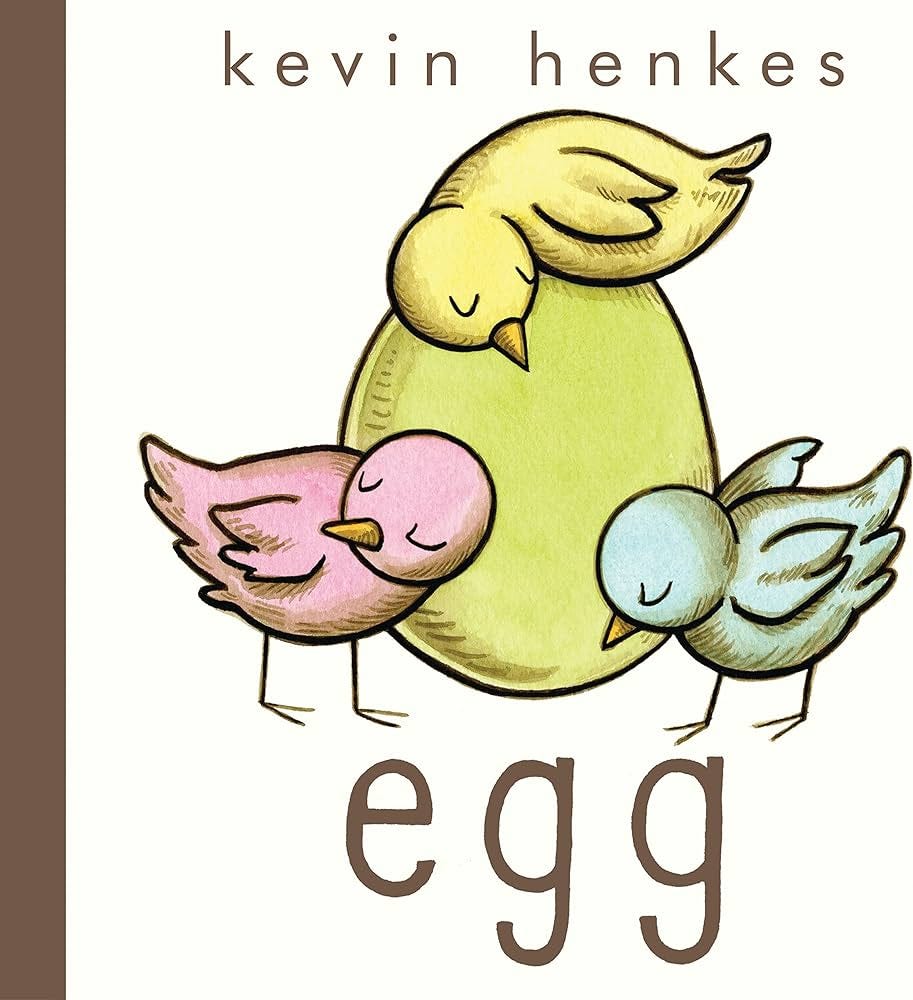
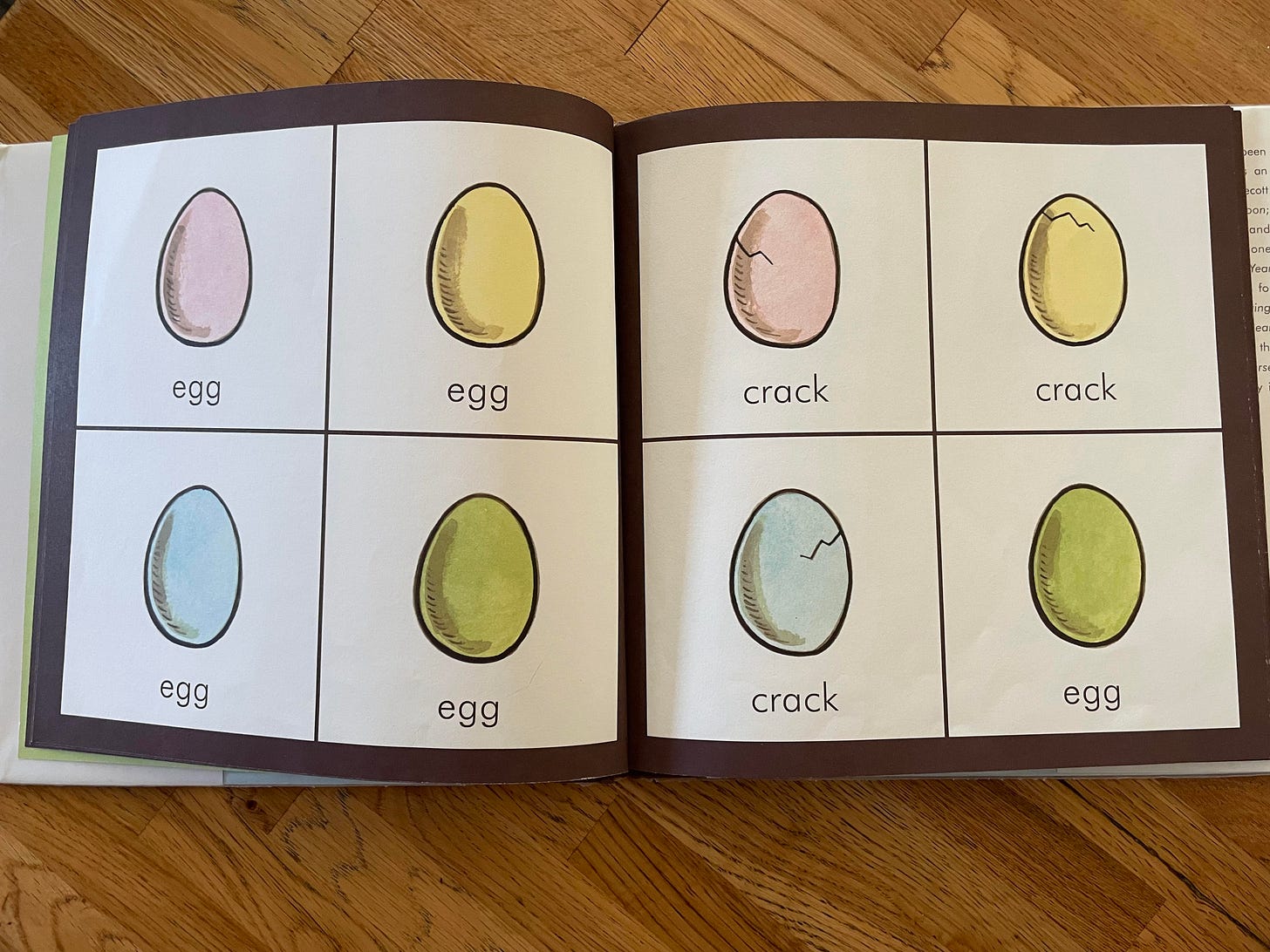

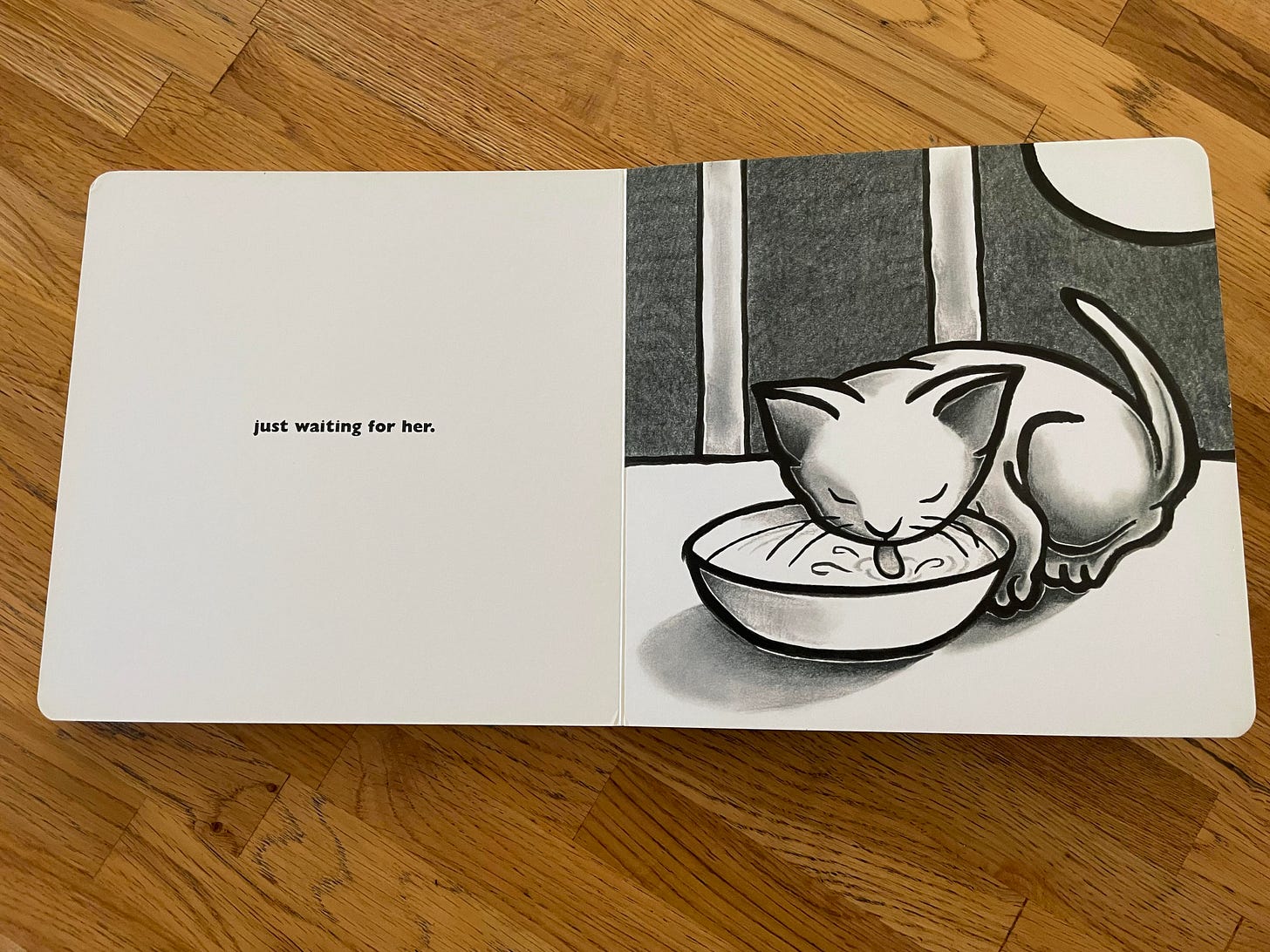
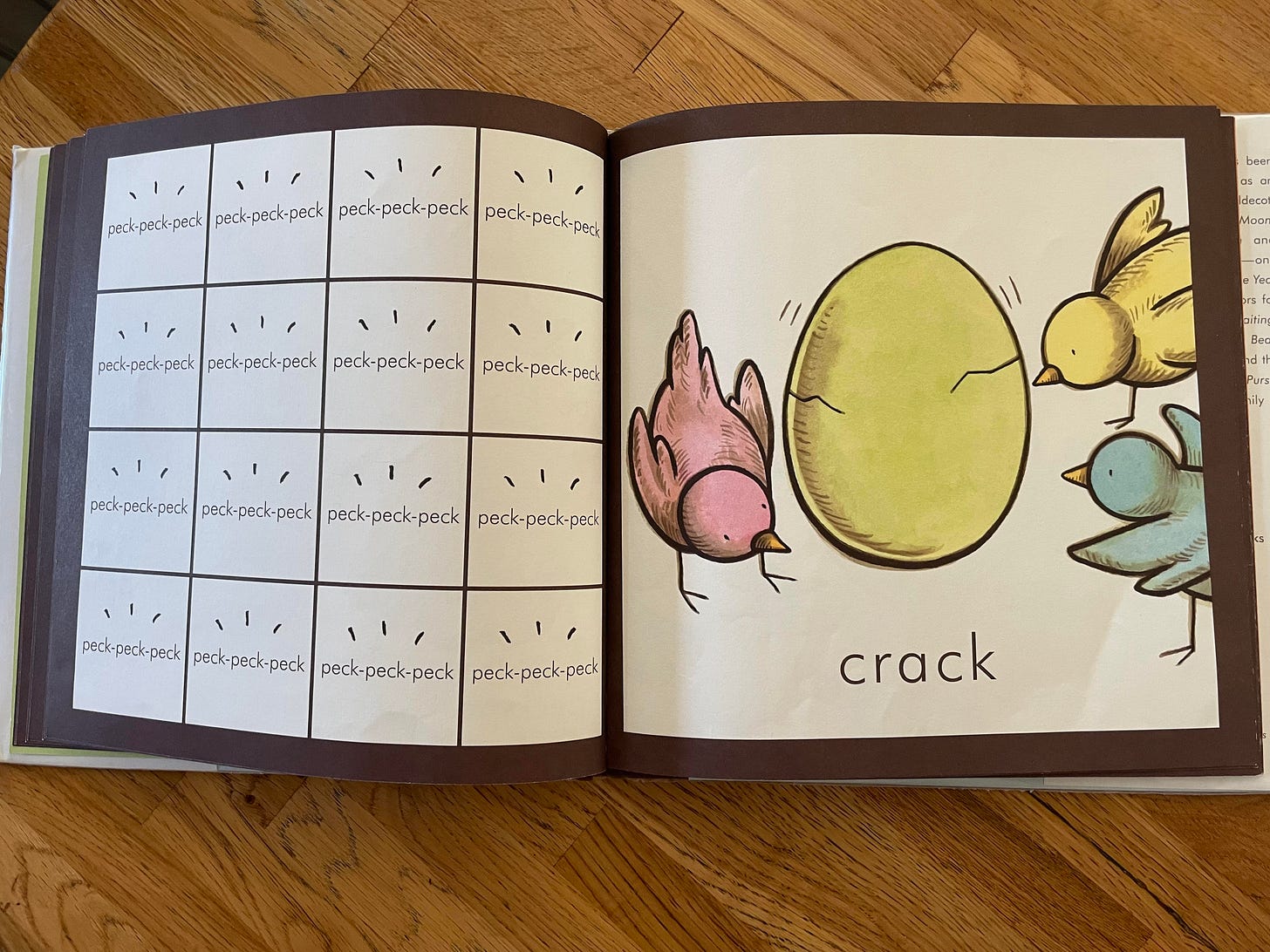

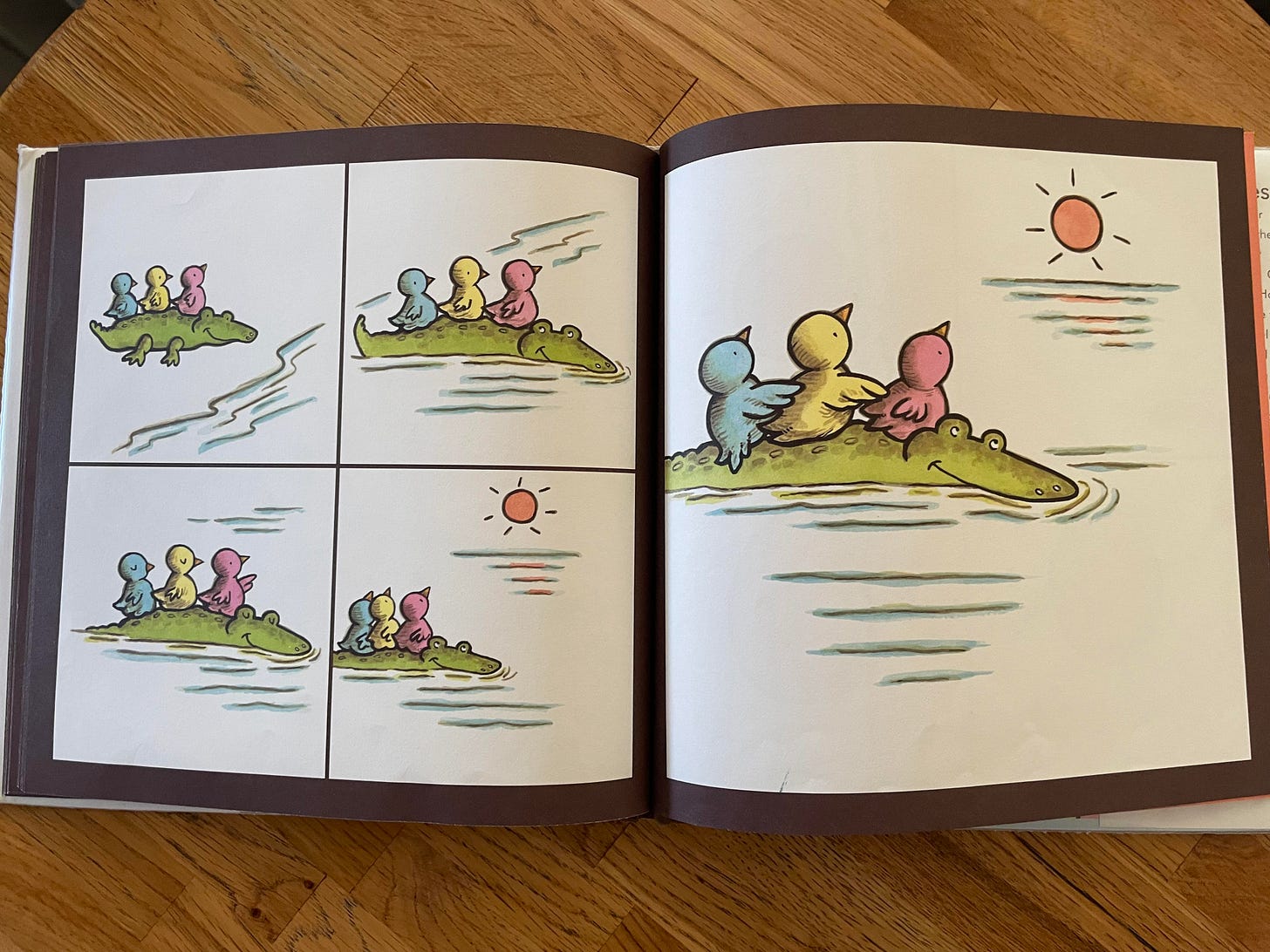
Love this analysis! And I loved hearing about “Craaa!” Isn’t that just the most amazing moment?
The most amazing pattern analysis I’ve seen in our 20 month old is how easily he recognizes animals across different books, clothes, toys, etc. even when they’re pretty different. Kids are amazing